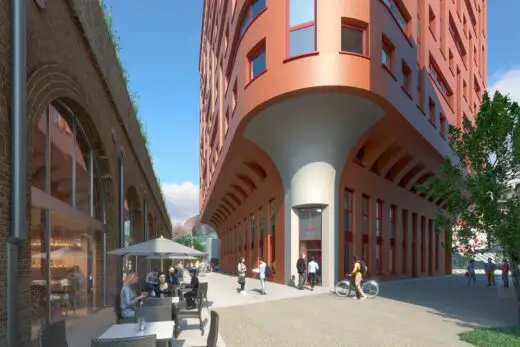Jeremy Till, University, London Architecture Book, Education, Contingency
Jeremy Till Architecture
Discussions on Current Architectural Topics – article from 15 Jun 2005
15 Jun 2005
Elevator Pitch – Architecture & Contingency
Jeremy Till Architecture Design
The essential argument of the book is straightforward. During the course of its writing, people have often asked, “What is it about, Jeremy?”
“Short or long,” I ask.
“The elevator pitch, between floors.”
So, getting in on the ground floor, I say: “It is based on two premises. First, architecture is a contingent discipline. Second, architecture, as profession and practice, does everything to resist that very contingency. The book explores that resistance.”
By this stage we are at the first floor.
“So, what do you mean by contingency?”
“I mean,” looking at the indicator clicking from 1 to 2, “that architecture at every stage of its existence – from design through construction to occupation – is buffeted by external forces. Other people, circumstances and events intervene to upset the architect’s best-laid plans. These forces are, to a greater or lesser extent, beyond the direct control of the architect. Architecture is thus shaped more by external conditions than by the internal processes of the architect. Architecture is defined by its very contingency, by its very uncertainty in the face of these outside forces.”
“But that is kind of obvious,” my elevator companion says, “so what is the big idea?”
“No big idea, but maybe a big problem, namely architects tend to denythat contingency. They feel more comfortable in a world of certain predictions, in linear method, in the pursuit of perfection.”
“But that’s kind of obvious too. Doesn’t sound like much of a book if it just states two truisms.”
He has hit a nerve here. I have wondered for years why others never mention an argument that I think is obvious. Is it because it is so obvious that it is not said for fear of being seen as simple? Or is it because it is too uncomfortable to say, a kind of taboo that we all know to be the case but fear acknowledging? I am hoping that the latter is right and say as much: “Right, but what if that book is about the clash of those two truisms and the gap that opens up between them? The gap between what architecture – as practice, profession and object – actually is (in all its contingency) and what architects want it to be (in all its false perfection). What then?”
He does not answer, but makes a face somewhere between a smile and grimace (he’s an architect, you see), maybe acknowledging his own frailty whilst at the same time wanting to shrug it off. A both/and face appropriate for an argument that, as we shall see, resolves itself in a both/and solution.
“And what if,” I continue, pressing home my advantage, “the book argues that we must bridge that gap by opening up to contingency as an opportunity? That the inescapable reality of the world must be engaged with and not retreated from. And that in that engagement there is the potential for a reformulation of architectural practice that would resist its present marginalisation. What then?”
“Then I might buy the book.”
We get out together at the fourteenth floor.
This is the opening of Jeremy Till’s forthcoming book: Architecture and Contingency. Jeremy teaches at Sheffield University School of Architecture and is famous for his teaching work previously at the Bartlett School of Architecture, UCL, London and for his Straw Bale House designed with his partner, architect Sarah Wigglesworth
15th of June 2005
Architectural Critics
London Houses – features the Straw Bale House in Holloway, North London, designed by architecture tutor Jeremy Till
London Architectural Designs
London Architecture Designs – chronological list
London Architect – design practice listing on e-architect
London Architecture Designs – architectural selection below:
Design: Fletcher Priest Architects
image : Secchi Smith
One Exchange Square Broadgate Building
Architects: CZWG

render : CZWG Architects
Railway Arches Student Housing London
Comments for the Jeremy Till Architecture page welcome
